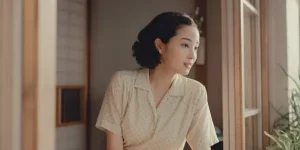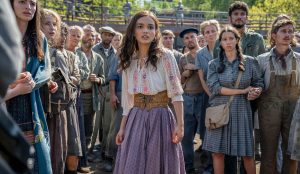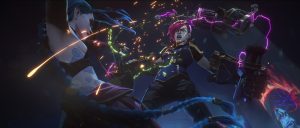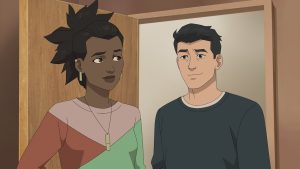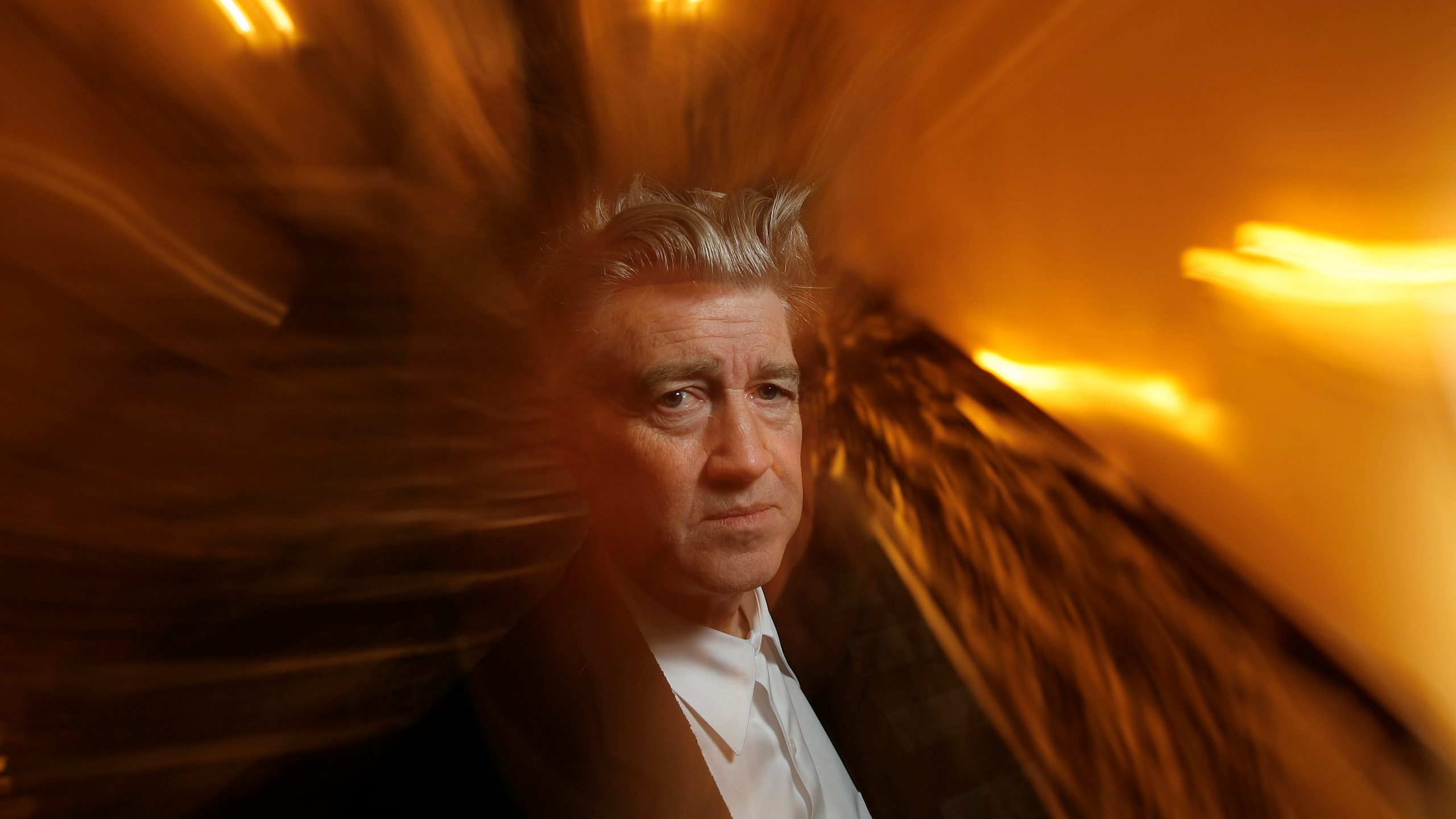
David Lynch has been making movies since the 1960s, when he was an art student who wanted to see his paintings move. Since then, he’s become one of the most recognizable and beloved auteurs in cinema history, a filmmaker who enjoys remarkable success, given his idiosyncratic work.
Because Lynch’s work is so personal, it has long been difficult for critics and fans to reach a consensus regarding which is his very best work. Every single one of his movies and TV series has value, and each one strikes different people in different ways. Indeed, even this writer finds himself changing his own personal ranking from time to time.
Like Lynch himself, his works are impossible to categorize and, thus, near impossible to rank, but we’ve given a go in order to celebrate the filmmakers long and celebrated career. We’re looking back at both his movies and the TV series he’s created but have not included the short films this time around. Of course, the list will change again and again, like a dream within a dream.
13. Inland Empire (2004)
Without question, Inland Empire has its amazing moments. Laura Dern gives a fearless, raw performance as an actress who cannot maintain the line between herself and her character. Lynch is joined by some of his best collaborators, including Harry Dean Stanton, Justin Theroux, and Grace Zabriskie, and gets supporting takes from Jeremy Irons and Mary Steenburgen.
Despite containing some of Lynch’s most powerful images, Inland Empire is also shot on digital video, which flattens the compositions. Furthermore, the three-hour opus covers a lot of familiar ground for Lynch, making it an interesting exercise, but not a satisfying film.
12. On the Air (1992)
Without question, there are those who absolute love On the Air, Lynch and Mark Frost‘s sitcom follow-up to Twin Peaks. For this more obscure project, the duo brings along several members of the Twin Peaks cast, including stars such as Miguel Ferrer and Ian Buchanan, as well as writer Robert Engels and director Lesli Linka Glater. Unsurprisingly, On the Air has a similar tone to Twin Peaks… well, it has a similar tone to the comedic sections of Twin Peaks.
On the Air chronicles the making of The Lester Guy Show, a 1950s variety program starring the arrogant Lester Guy (Buchanan), which becomes a ratings hit after bumbling starlet Betty Hudson (Marla Rubinoff) captivates the audience. Only three episodes of On the Air made it to air in 1992, and only seven were ever made at all before ABC pulled the plug. This one’s not for everyone, but for those who love Lucy and Andy’s hijinks in Twin Peaks, On the Air is a lot of fun.
11. Lost Highway (1997)
As much as he’s embraced by the avant-garde, Lynch is, at his heart, an affable Midwesterner. So there’s a bit of a disconnect in Lost Highway, which drips with late ’90s cool. Lost Highway takes Lynch’s fascination with doubles into a new direction, with Bill Pullman as a sax player whose doppelgänger might murder his bombshell wife (Patricia Arquette), who looks identical to the mistress of powerful mobster Mr. Eddy (Robert Loggia).
The noir trappings give Lynch new avenues to explore his pet themes, making for the director’s sexiest (but not most sensual) film. Robert Blake gives Lynch the best depiction of evil this side of Twin Peaks‘ Bob, known only as the mystery man. However, the hipness of Lost Highway often feels overdone, especially with a terribly miscast Pullman trying to convey an edge he simply lacks.
10. Hotel Room (1993)
The HBO anthology series Hotel Room is hard to classify, simply because of its an odd production. Created by Lynch and Wild at Heart producer Monty Montgomery, Hotel Room tells short stories about the strange happenings within room 603 of the Railroad Hotel. Lynch and Montgomery hoped to produce a full season of standalone episodes, but only a single anthology movie aired on HBO, consisting of three stories.
The middle entry directed by James Signorelli is passable at best, but the first and third sections, both directed by Lynch, have merit. The first is an intense and stagy bit about two older men (Freddie Jones and Harry Dean Stanton) with a mysterious connection and the sex worker (Glenne Headly) they fight over. The third is outstanding, a tense and unexplainable conversation between a married couple (Crispin Glover and Alicia Witt) during a power outage. The two segments are fine slices of Lynch storytelling, if a little too underdeveloped to stand up with his best work.
9. The Elephant Man (1980)
The Elephant Man is truly the outlier in Lynch’s filmography. A tony biopic about a tragic figure, starring respected actors Anthony Hopkins and John Hurt, The Elephant Man seems more like an Oscar play than the sophomore film of an experimental filmmaker.
However, Lynch works several of his characteristic elements into the movie. The black and white photography, industrial imagery, and dream sequences involving John Merrick’s (Hurt) mother all make The Elephant Man a strange mixture of traditional biopic and Lynch weirdness.
9. Dune (1984)
One would think that Denis Villeneuve‘s excellent and more faithful adaptations of the Frank Herbert novel would only make Lynch’s infamously uneven Dune look even worse. However, the modern blockbusters have had the opposite effect. For everything that Villeneuve does right, there’s a monochromatic domestication to his vision of Arrakis and its warring houses. It feels like a place where people named Paul and Jessica live, not the home of Feyd-Rautha Harkonnen, Liet Kynes, or Chani.
Whatever its shortcomings, the David Lynch Dune feels otherworldly. Even when the most bumpkin actor of all time Everett McGill is playing Fremen leader Stilgar, Lynch surrounds him with oddities, such as Patrick Stewart charging into battle with a pug in his arms or the most disgusting Baron Harkonnen imaginable. It’s an off-putting film, one poorly suited to launching a sci-fi franchise. But it is unique and unexpected, and that deserves praise.
8. Wild at Heart (1990)
Wild at Heart is Lynch at his most excessive, in both his pure romanticism and his bizarre visuals. Based on the novel by Barry Gifford, Wild at Heart stars Nicolas Cage and Laura Dern as Sailor and Lula, whose unadulterated love makes them outcasts to the rest of the world. Wild at Heart goes all the way, and Cage and Dern are very much up to the task, giving vulnerable, raw performances.
That said, every single person in Wild at Heart goes just as far. Crispin Glover shows up as aman obsessed with Christmas, Dern’s mother Diane Ladd covers her entire face with lipstick, and Willem Dafoe gleefully plays the most upsetting person ever captured on film. And somehow, the whole thing plays as a tribute to The Wizard of Oz, which either makes Wild at Heart more wonderful or more disturbing, depending on your tolerance for extremes.
7. Eraserhead (1977)
Eraserhead put Lynch on the map, thanks to the midnight screenings of the late 1970s. To this day, Eraserhead contains some of Lynch’s most indelible images, such as the puffy cheeked woman in the radiator and an indescribable bird-like “baby.” With its black and white photography and emphasis on industrial landscapes, it’s no wonder that so many see Eraserhead as an aggressive outsider classic.
However, too much attention to the edgy elements can distract from Eraserhead‘s fundamentally empathetic core. Eraserhead captures the feeling of a young man unsure about the responsibilities of adulthood, as seen in Jack Nance’s bemused stare and Charlotte Stewart’s emotional breakdowns. This film set the tone for all of Lynch’s work to follow, at once shocking and moving.
6. Twin Peaks: Fire Walk With Me (1992)
Even today, it’s easy to see why so many rejected Twin Peaks: Fire Walk With Me when it first debuted at Cannes. The prequel movie leaves unresolved the cliffhanger at the end of the series and, in fact, does away with the comedic and romantic parts of the show (along with most of the cast) for a harrowing look at the last week in the life of Laura Palmer.
Yet, Fire Walk With Me deserves praise for the way Kyle MacLachlan‘s reluctance to participate in the film drove Lynch to ideas about doppelgangers and doubles, which became the focus of his next couple of films. Best of all, Fire Walk With Me makes Laura into a proper character, not just the tragic pretty girl that everyone talks about and mourns in the series. Sheryl Lee gives a virtuoso performance as the doomed Laura, finding surprising notes of heroism in her character, without sacrificing the horror of her last days.
5. The Straight Story (1999)
On the surface, The Straight Story sounds like the most unlikely entry in Lynch’s filmography. It’s a G-rated movie for the Walt Disney Company, based on the inspirational true story about an elderly man who travels across the Midwest on a riding lawnmower to see his dying brother one last time.
The Straight Story might lack sinister owls or horrific doubles, but it is Lynch through and through. Written by Lynch’s frequent collaborator Mary Sweeney and John Roach, The Straight Story stars Richard Farnsworth as Alvin Straight, who makes the 240-mile trek to see his brother Lyle (Harry Dean Stanton). The Straight Story finds Lynch using his experimental techniques to underscore the weight of the years accrued by these elderly men, anchored by an outstanding performance by Farnsworth.
4. Twin Peaks (1990-1991)
In a better world, Twin Peaks would be number one on any Lynch ranking. The series could have been the perfect avenue for Lynch and Frost to explore their unique interests. Although the series purports to follow FBI Special Agent Dale Cooper’s (MacLachlan) investigation into the murder of Laura Palmer (Lee), it is in fact an exploration of the eccentricities of a small northwestern logging town.
Twin Peaks has its moments of surreal horror, especially the infamous Red Room and the backwards-talking Man from Another Place (Michael J. Anderson). But it’s also an ongoing parody of soap operas and features moments of unironic teen romance, slapstick comedy, and more. When Lynch and Frost were at the helm, Twin Peaks combined these elements into something amazing. When they stepped away, leaving the reigns to Harley Peyton and Robert Engels, Twin Peaks became a parody of itself, which accounts for its lower ranking here.
3. Blue Velvet (1986)
Blue Velvet begins with a shot of a pleasant suburb, complete with a man watering his lawn. When the man has a heart attack, the camera follows him as he collapses, and then continues into the dirt, where it holds on the creepy crawlies lurking below the well-maintained yards. A lesser filmmaker would have stopped there, thinking that “the suburbs are weird” is enough of a statement, even 30 years after John Cheever’s best stories.
But Lynch goes farther in Blue Velvet, using its Neo Noir tropes to portray innocence lost and innocence never present. Good boy Jeffrey (MacLachlan) returns to his hometown and connects with his one-time love (Dern), only to get pulled into a mystery involving an alluring torch singer (Isabella Rossellini) and her abuser (Dennis Hopper). The scene of a nude Rossellini running outside and screaming at the void goes far beyond Blue Velvet‘s opening shot, cementing Lynch’s status as one of cinema’s most important voices.
2. Twin Peaks: The Return (2017)
“I’ll see you in 25 years,” Laura tells Agent Cooper in the 1991 finale of Twin Peaks. The fact that Twin Peaks: The Return only misses that promise by one year speaks to how special, and unexpected, the series is. On one hand, The Return does indeed follow-up on the original series, bringing back nearly every cast member (the retired Michael Ontkean and Michael J. Anderson declined to show up), but also exploring issues of aging, nostalgia, and unresolvable dread.
The Return features moments of fan service, including a long-awaited kiss between Big Ed (Everett McGill) and Norma (Peggy Lipton), Bobby (Dana Ashbrook) remembering his late father’s advice, and confirmation that James (James Marshall) was always cool. But it also intentionally frustrates the audience, both by keeping Cooper out of almost all of the series, replacing him with the brain dead Dougie, and completely undercutting the idea that Cooper could ever save Laura. All together, The Return feels like the coda of Lynch’s work, a celebration of everything that makes him so weird and moving.
1. Mulholland Drive (2001)
First of all, we have to acknowledge that Mulholland Drive can be explained pretty easily. It doesn’t take much to unravel the mystery of starry-eyed ingénue Betty (Naomi Watts), her doppelgänger Diane, her new friend Rita (Laura Harring) and Rita’s doppelgänger Camilla. The blue box, the incompetent hit man, heck, even the spooky figure behind Winky’s—all of that fits into a coherent explanation.
But anyone who worries about “explaining” Mulholland Drive is missing the point. Mulholland Drive stands as the ultimate statement on the power and peril of the movies, and Lynch fills the film with moments that operate best on an emotional and ineffable level. To explain the depths of feeling that the otherwise flighty Betty conjures during her audition or the slow dread of the cowboy who meets director Adam Kesher (Justin Theroux) is to limit them. Instead, more than any of Lynch’s other works, Mulholland Drive exists as a feeling and a dream, something that stays with you, even in the waking world.
The post David Lynch Movies and TV Shows Ranked: From Twin Peaks and Dune to Mulholland Drive appeared first on Den of Geek.
